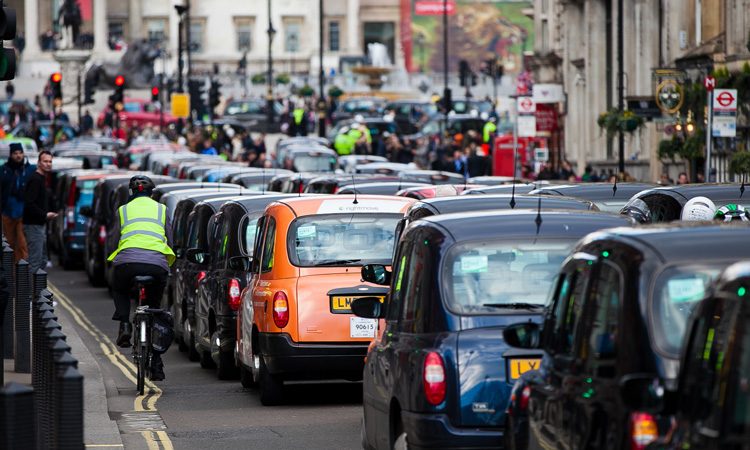Taxi drivers exposed to highest levels of harmful black carbon from diesel emissions
- Like
- Digg
- Del
- Tumblr
- VKontakte
- Buffer
- Love This
- Odnoklassniki
- Meneame
- Blogger
- Amazon
- Yahoo Mail
- Gmail
- AOL
- Newsvine
- HackerNews
- Evernote
- MySpace
- Mail.ru
- Viadeo
- Line
- Comments
- Yummly
- SMS
- Viber
- Telegram
- Subscribe
- Skype
- Facebook Messenger
- Kakao
- LiveJournal
- Yammer
- Edgar
- Fintel
- Mix
- Instapaper
- Copy Link
Posted: 30 September 2019 | Intelligent Transport
Diesel fumes can contain up to 10 times the amount of soot particles found in petrol exhaust fumes, and can cause cancer.


A study, led by King’s College London researchers and funded by the Institution of Occupational Safety and Health (IOSH), has found that taxi drivers experience the highest exposures to black carbon, an indicator of diesel engine fumes, compared to other professional drivers including couriers, truck drivers, waste removal and emergency service workers.
Shanon Lim, a Research Assistant and PhD candidate at King’s College London , said: “We know quite a lot about the dangers of exposure to traffic pollution. However, there has been surprisingly little research on levels of professional drivers’ exposure to pollution and its effects on their health. We believe there are around a million people working in jobs like these in the UK alone, so this is a widespread and under-appreciated issue.”
The researchers recruited 140 professional drivers from a range of occupations working in central London. The drivers were asked to carry black carbon monitors, which were linked with GPS trackers, for a period of 96 hours. The monitors measured exposure levels once every minute. Drivers were also asked about the type of vehicle they drive, their working hours and whether they drive with their windows or air vents open.
The results showed that, on average, professional drivers were exposed to 4.1 micrograms of black carbon per cubic metre of air (µg/m3) while driving, which was around four times higher than their exposure at home (1.1 µg/m3). Researchers said that the levels recorded at home are similar to levels experienced by office workers at their desks.
Professional drivers also experienced extremely high spikes in exposure to black carbon, often exceeding 100 µg/m3 and lasting as long as half an hour.
During the same period of time, researchers found that pollution levels at a busy London roadside (Marylebone Road) were 3.1 µg/m3 on average and, away from the roadside, the average level in London was 0.9 µg/m3.
Taxi drivers had the highest levels of exposure on average (6.5µg/m3) and emergency services workers had the lowest levels of exposure on average (2.8 µg/m3). Lim said: “Our study suggests that professional drivers are exposed to high levels of traffic pollution while at work. Because these levels are higher than those we find at the roadside, this suggests that being inside a vehicle doesn’t necessarily offer any protection, in fact the opposite may be true: that air pollution can get trapped inside the vehicle for extended periods of time.
“We don’t know for sure why taxi drivers fare the worst, but it might be because taxis tend to operate in the busiest and most polluted parts of the city where ‘street canyons’ restrict the movement of air. On the other hand, emergency services can avoid congestion when they are attending an incident.”
The research also showed that keeping windows closed while working halved the levels of black carbon for professional drivers. The type of vehicle and the choice of route could also lower exposure.
Mike Hedges, a London taxi driver, said: “As a taxi driver driving in the most polluted streets in London, I have always wanted to improve the air quality. I became involved in helping successive London Mayor’s develop their air quality strategies for London’s taxis and engaging with taxi drivers in helping them understand their own personal air pollution exposures through Unite, my trade union.
“Although the air pollution hasn’t had any impact on my health, many of my colleagues have been affected and I think tackling London’s air quality should be a priority to protect taxi drivers, who are the most exposed group of occupational drivers.”
The researchers plan to investigate possible strategies for protecting drivers, such as the use of air filters. “This is vital to help employers, occupational safety and health professionals and individual workers reduce exposure and minimise work-related health risks,” said Lim.
Related modes
Taxi
Related cities
UK
Related organisations
King’s College London, the Institution of Occupational Safety and Health (IOSH)
Related people
Mike Hedges, Shanon Lim



